Beginner band percussion is fun and challenging. There are hundreds of instruments in the percussion family that you can learn and multiple ways to participate in the percussion section of any beginner band, orchestra, marching band, or percussion ensemble.
Learning a musical instrument at any age has educational and personal benefits. Playing in beginner band percussion increases your brain activity, helps you enhance your reading skills, and improves your verbal memory. As a beginner percussionist, you’ll learn advanced coordination, increase your dexterity, and improve your overall health.
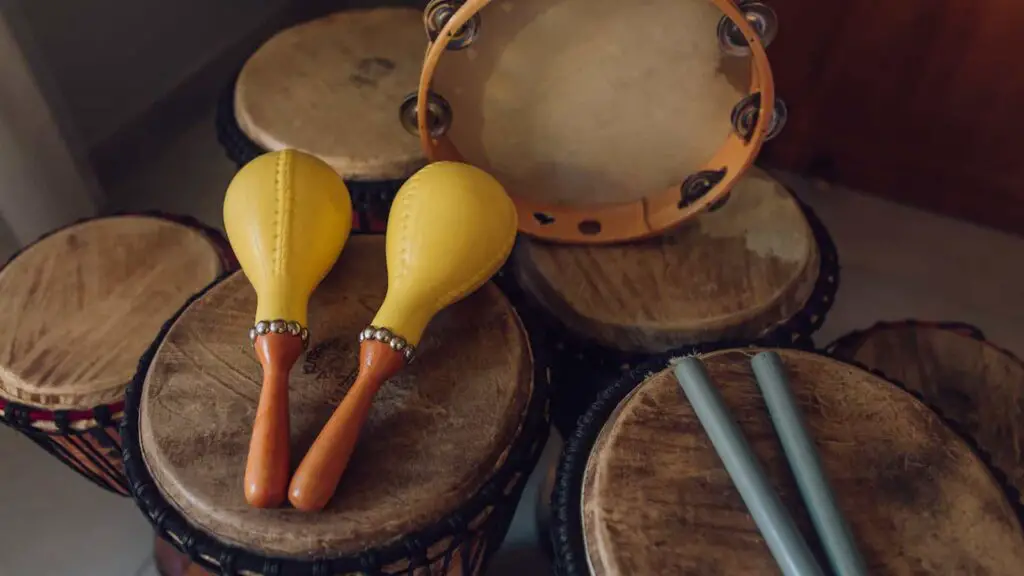
If you are interested in becoming a percussionist and you want to learn more about what percussion instruments are available to learn how to play keep reading!
How Many Instruments are in Percussion
There are over 500 unique instruments in percussion. The percussion family of instruments has a long history of existence and evolution. There are many ways to divide and classify percussion instruments.
For example
Percussion instruments can be divided into tuned and untuned.
Tuned percussion instruments would include:
- Crotales,
- Gongs
- Tam Tams
- Hand Bells
- Marimba
- Xylophone
- Glockenspiel
- Steel Drums
- Timpani or Kettle Drums
- RotoToms and many more!
Untuned percussion instruments would include:
- Agogo Bells
- Finger Cymbals
- The Ratchet
- Jingle Bells
- Slide Whistle
- Wood Block and so many more.
Pictured below are some of the most common percussion instruments.
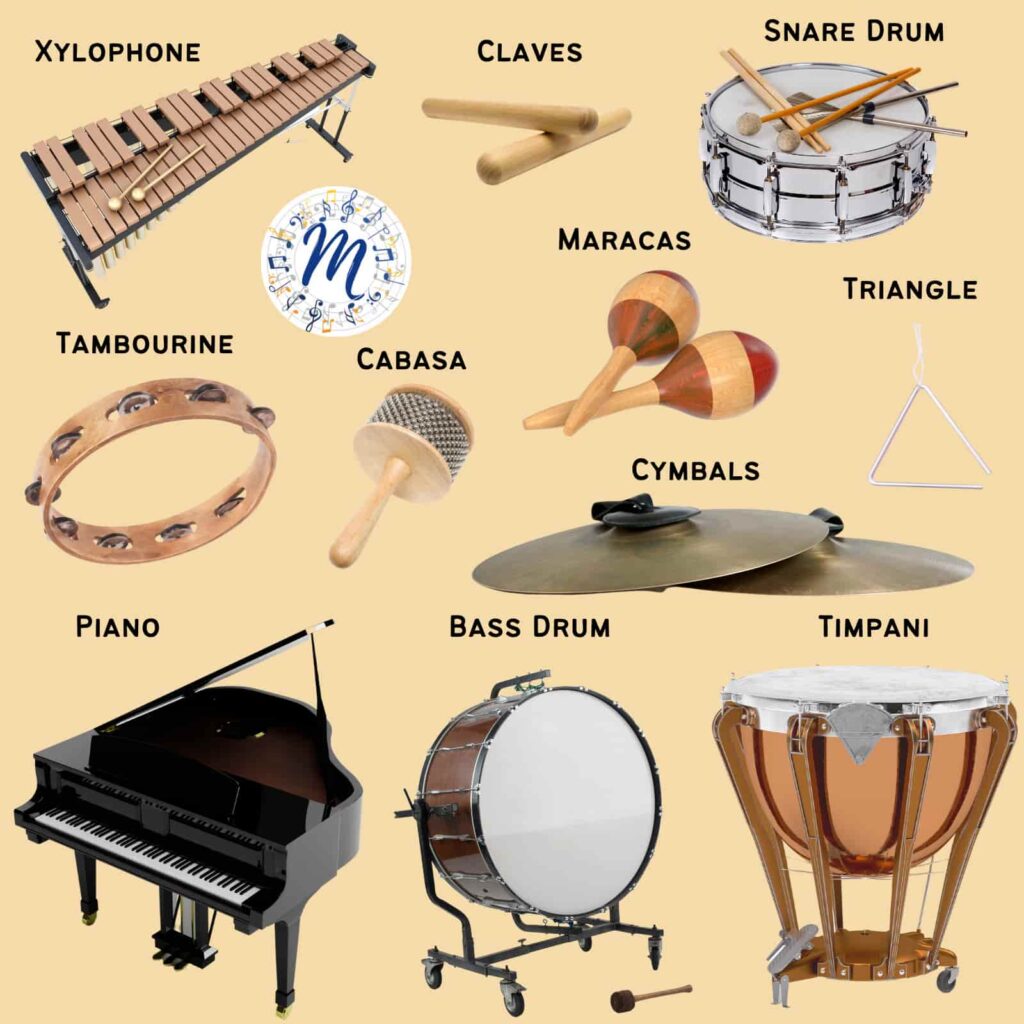
You can classify percussion instruments as Idiophones or Membranes.
🎵 Idiophone percussion instruments vibrate to make a sound or tone.
Percussion instruments in the Idiophone category include:
- Vibraslap
- Shakers
- Bells
- Chimes
- Cowbells
- Instruments without a membrane or drum head.
🎵 Membrane percussion instruments produce a sound when the membrane is struck or stoked.
Percussion instruments in the membrane family include:
- Snare Drum
- Bass Drum
- Bongos and Congas
- The Headed Tambourine
- Timpani
- Tabla, and many others.
🎵Note: The Piano is often classified in the percussion family because the strings of the piano are struck with a felt mallet that is activated by the keys on the keyboard.
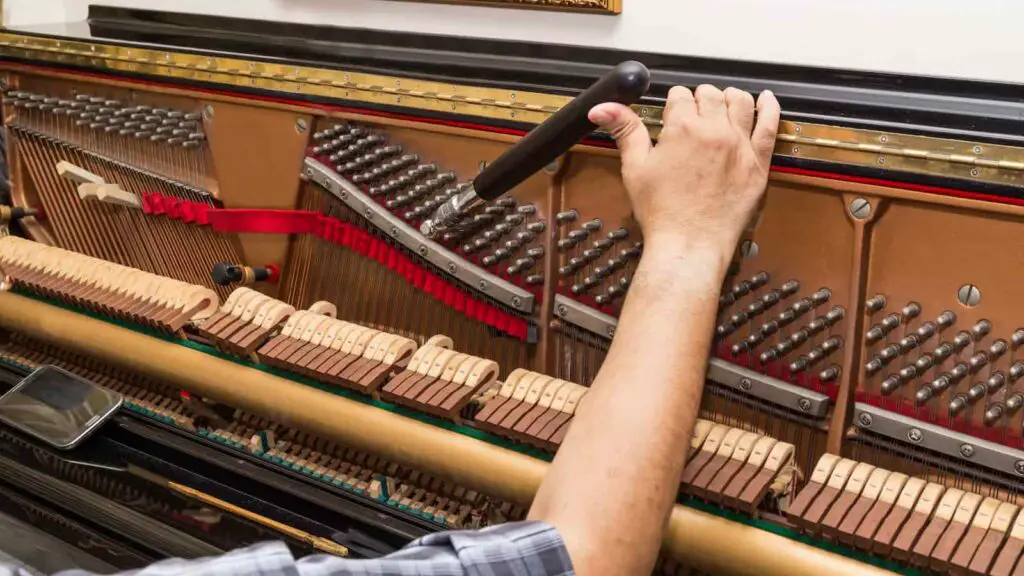
How Do You Start Percussion
A good time to start percussion is in Elementary School or whenever your school has a beginning band. You can take music lessons from a private teacher to ensure that your reading and rhythm skills improve. Your Band Director or private teacher will start teaching you on a snare drum or practice pad.
🎵 Note: Percussion instruments tend to be among the most popular that students want to play! Sometimes this means you may have to try out or be assigned by your band director before you get to be in the percussion section.
When first signing up for band some band directors will want their students to try out a range of instruments this helps the director to know what the student has a natural talent for. They generally do also take into account your interest for different instruments.
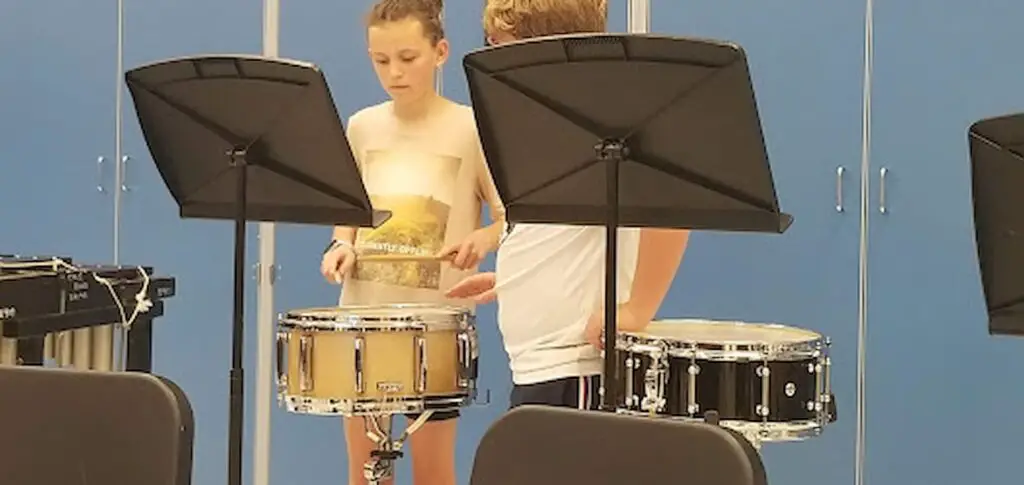
When you first begin playing percussion you will start by learning how to properly hold and use the drumsticks, precisely strike/play the drum, and accurately read and understand percussion music.
Your private teacher or band director will use a variety of rhythmic exercises to build your reading skills and coordination.
Note: Popular Beginner Snare Drum Books
🎵 Stick Control- George Lawrence Stone
🎵 A Fresh Approach to the Snare Drum- Mark Wessels
🎵 The Drum Rudiment Bible- D. Mark Agostinelli
🎵 Drum Method- Haskell Harr
How Do You Play Percussion
Percussion is a diverse family of instruments that includes the piano, the drumset, timpani, mallet, melodic instruments, ethnic instruments, marching percussion, and a variety of shakers and noise makers known as auxiliary percussion.
It takes multiple skills and knowledge to play percussion because of the large number of instruments in the percussion family. To play percussion, you must have reading skills and physical/technical skills.
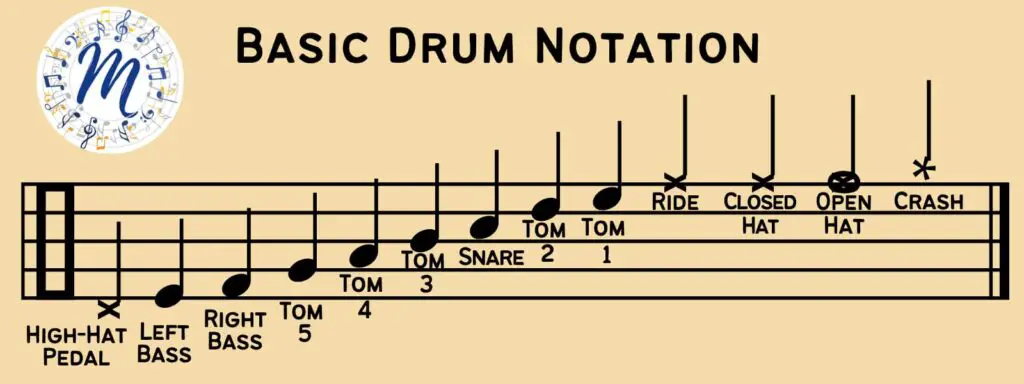
Reading skills include:
- Musical rhythms,
- Scales,
- Chords,
- and Special Notation.
Physical/technical skills include:
- Sense of timing/rhythm
- Ability to count and keep time
- Proper grip and control of a variety of sticks and mallets
- Hand techniques for hand drums
- Ability to “match tones” when tuning timpani and other tunable percussion instruments
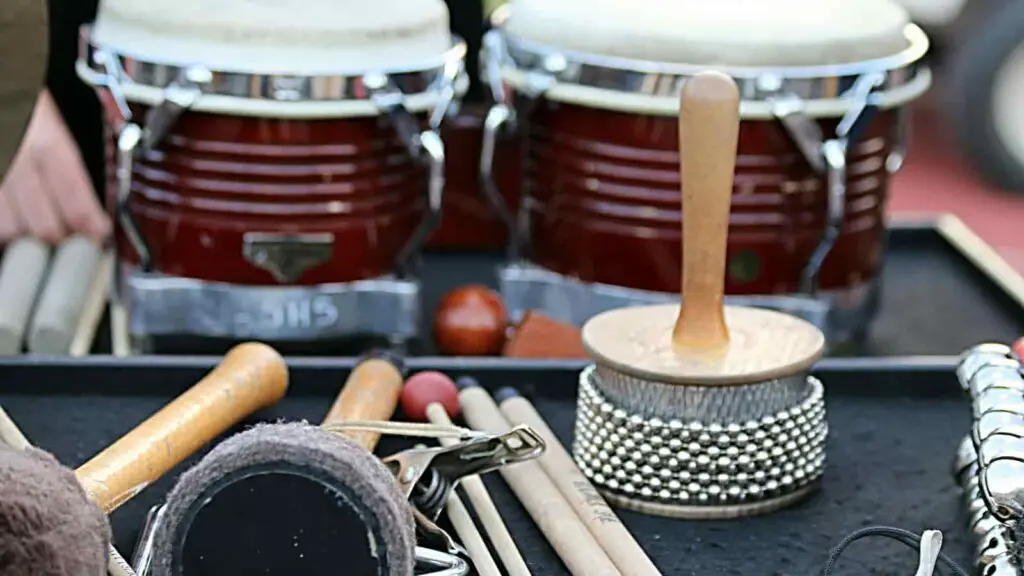
3 Ways You Can Play Percussion
Playing percussion instruments is fun and challenging. The percussion instrument family is the most varied instrument family in any band or orchestra. As a beginner band percussionist, you will play just a few of the over 500 different instruments in the percussion family. Three ways you can play percussion is to: Shake it, Strike it, or Smack it.
1. Shake it
The auxiliary percussion family is full of things to shake. Some percussionists call these “toys.” Many percussion instruments make their sound by being shaken.
For example: You shake a tambourine. You shake the maracas. You shake the jingle bells.
2. Strike it
A large percentage of percussion instruments are hit with a drumstick or a mallet. Drumsticks come in a variety of lengths, thicknesses, and wood types. Some drumsticks are made of materials other than wood. Mallets come in even more varieties than drumsticks.
Mallets are used to strike timpani, xylophones and marimbas, gongs, cymbals, and many other percussion instruments. Mallets are used on some percussion instruments because they can produce a different sound than a drumstick.
🎵 Note: Do you know the difference between the Xylophone, Marimba, and Glockenspiel? Knowing what the different percussion instruments look like is an important first step in learning to play them.
3. Smack it
The correct way to play the bongos or conga drums is by smacking it with your hand. There are many percussion instruments that make sounds by smacking them with your hand. For some, you use your fingers. For others, you use your palm.
Concert Crash Cymbals sound by smacking the two cymbals together. There is more technique required to get a quality sound from crash cymbals than simply “smacking” them together, but, from afar a percussionist playing these cymbals may look like they’re just smacking and smashing them to make loud noises.
How Can I Practice Drums at Home
You can practice drums at home with a snare drum, drumset, or practice pad. Having a full drum set at home will allow you to practice the snare drum and to practice coordination around the drumset. You can also use a practice pad or a practice pad drumset which is more affordable for beginners.
Practicing some of the other percussion instruments at home is more expensive. It is a luxury to own a xylophone or marimba, or a complete set of timpani. Ask your band director to schedule time for you to practice these instruments at school or during summer break.
🎵 Note: This beginner percussion kit can help you learn the basics and give you a head start.
It has a 32 Note Glockenspiel Xylophone Bell Kit, as well as an 8′ Drum Practice pad, Adjustable Stand, Glockenspiel Stick, Drum Sticks, and Carrying Bag.
What is Percussion in Middle School Band
Percussion in Middle School Band is usually where the percussionist will learn advanced skills like playing the timpani, playing harder melodies and rhythms on mallet instruments, and be introduced to additional members of the auxiliary percussion instruments family.
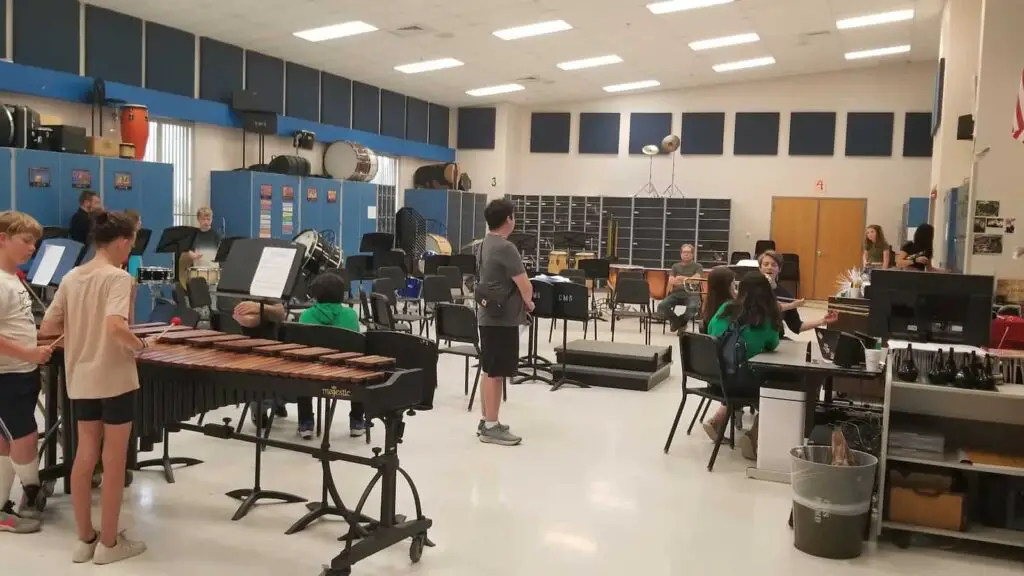
Middle school band percussion music is more difficult than beginner band music and requires additional practice and greater skills.
During middle school band, the beginner percussionist may play in a percussion ensemble or percussion band. Percussion ensembles and bands give percussion students the opportunity to advance their musical skills and learn a larger variety of instruments in the percussion instrument family.
🎵 Note: Can you guess what the 6 hardest percussion instruments to learn how to play are? Click the link to read the article and see if you have guessed right!
How Do You Teach a Beginner Percussionist
You teach a beginner percussionist how to read percussion music, how to properly hold and use the drumsticks, how to perform basic rhythms, and introductory musical ideas useful in band, orchestra, ensembles, and as a soloist. Teaching a beginner percussionist can begin with the school band director or a private music teacher.
The percussion instruments used in the beginner band may include: the snare, a bass drum, a pair of hand crash cymbals, a suspended cymbal, concert bells, xylophone, chimes, timpani, and a few auxiliary percussion instruments.
If you teach younger children and need ideas for inexpensive instruments for them to get started on then you should check out this article 20 Cheap Musical Instruments to Play (How to Learn for Free!)
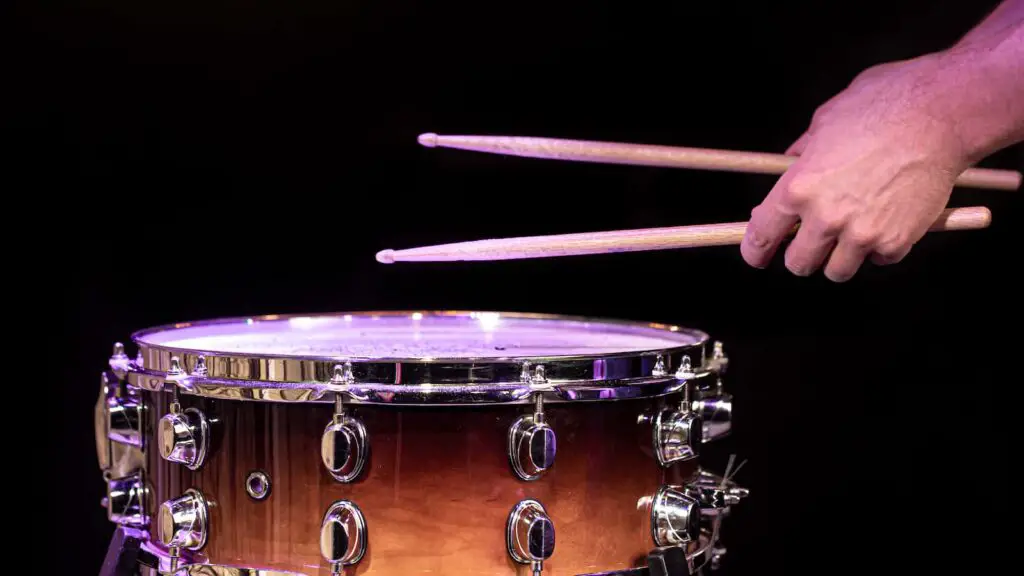
The snare drum is the first instrument the beginner percussionist will focus on.
The band director will next introduce the bass drum, the crash cymbals, and the suspended cymbal. The bells or other mallet instruments may be taught last unless the beginning percussionist has a musical background or ability in another instrument and can read beginner melodic music.
We hope this article has been helpful and informative for you in your musical journey. Please let us know if there is anything that we could add or change to make this article a better resource for our readers.
Please e-mail us at: [email protected] to let us know how we are doing!
Are you a beginner at Xylophone and want to learn more?
Ever wonder what it’s like to play Snare Drum in a Marching Band?
10 Popular Hand Percussion Instruments (How to Play & FAQ)
Disclaimer: This post may contain affiliate links. We only recommend high-quality products that are used and recommended by real musicians. If you use these links to buy something we earn a small commission.
